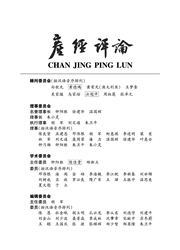

 中文摘要:
中文摘要:
政府碳减排政策下,如何推进由制造商和零售商构成的两级供应链低碳化发展,需作系统而深入的研究.针对两级供应链中制造商主导、零售商追随的情境,构建Stackelberg博弈模型,分析制造商和零售商在碳减排政策下进行的生产和碳减排决策,以及制造商与零售商在竞争、半一体化和一体化三种情况下的碳减排效果,对企业在碳减排过程中的相互作用、政府补贴对碳减排效果的影响进行讨论.理论和数值模拟分析结果均表明,政府实施碳补贴政策能激励供应链成员的碳减排行为,在此政策下,供应链成员一体化程度越高,越有利于供应链成员的碳减排效能和企业绩效.为此,政府应优先实施碳补贴政策,供应链成员则应选择强化一体化策略.
 英文摘要:
英文摘要:
Under the policy of the govemmenfs carbon emission reduction, how to promote the develop-ment of low carbon supply chain through the policy of the two level supply chain structure composed of manu-facturers and retailers. The leading manufacturer in the two - level supply chain, retailer follow the situation to construct the Stackelberg game model, analysis of manufacturer and retailer in carbon emission reduction poli-cy for production and carbon emission reduction decisions, and the carbon emission reduction effect of manu-facturers and retailers in the competition, semi - integration and integration, the process of interaction effects of enterprise in carbon emission reduction, government subsidies effect on the carbon emission reduction. Theoretical analysis and numerical simulation results show that the government implements the carbon subsidy policy to encourage the carbon emission reduction behavior of the members of the supply chain, under this policy, members of the supply chain integration degree is higher, the more conducive to the members of the supply chain of carbon emission reduction effectiveness and business performance. Therefore, the government should give priority to the implementation of carbon subsidy policy, the members of the supply chain should strengthen the integration of strategy selection.
 同期刊论文项目
同期刊论文项目
 同项目期刊论文
同项目期刊论文
 期刊信息
期刊信息
